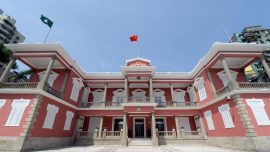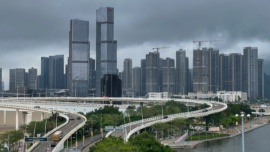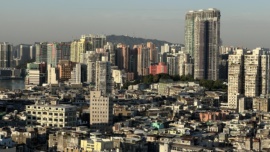Secretary for Security Wong Sio Chak has announced he expects legislation defining the structure and functioning of the future Civil Protection and Contingency Co-ordination Bureau (DPCCC) to be concluded in November.
The DPCCC is part of the overall revision of co-ordination for civil protection and rescue operations announced by the MSAR Government in the wake of Typhoon Hato, which caused 10 deaths, left almost 200 injured and incurred financial losses of around MOP11.47 billion (US$1.47 billion).
The information was provided at a seminar held yesterday at the Security Forces School in Coloane that brought together maritime security officials from Mainland China, Macau and Hong Kong to discuss co-operation on maritime security issues.
Here to stay
The new bureau will operate continuously and will oversee the Civil Protection Operations Centre, which is activated automatically by the Unitary Police Service (SPU) when a Typhoon Signal 8 or above is hoisted.
The Centre co-ordinates the civil protection operations of 11 public departments, seven private companies and nine security departments.
“The current civil protection structure involves 27 departments such as the Civic and Municipal Affairs Bureau (IACM) and Public Security Police Force (PSP). The new bureau will enhance co-operation between them by making communication more efficient,” the Secretary stated.
According to Secretary Wong, the board of the new bureau is to comprise members of different security departments but due to the lack of available human resources will remain under the Office of the Secretary for Security in its formative stages.
“The Chief Executive has yet to define how many or which people will be part of this bureau,” added the Secretary.
The DPCCC structure is currently “passing through legislative work”, while consultation is currently ongoing to collect the opinions of the services under the control of the Secretary.
“We hope this legislative process will clearly define the competences of the elements of the civil protection structure in order to reinforce the work of co-ordinating the various services involved and create a disciplinary regime,” said Wong.























